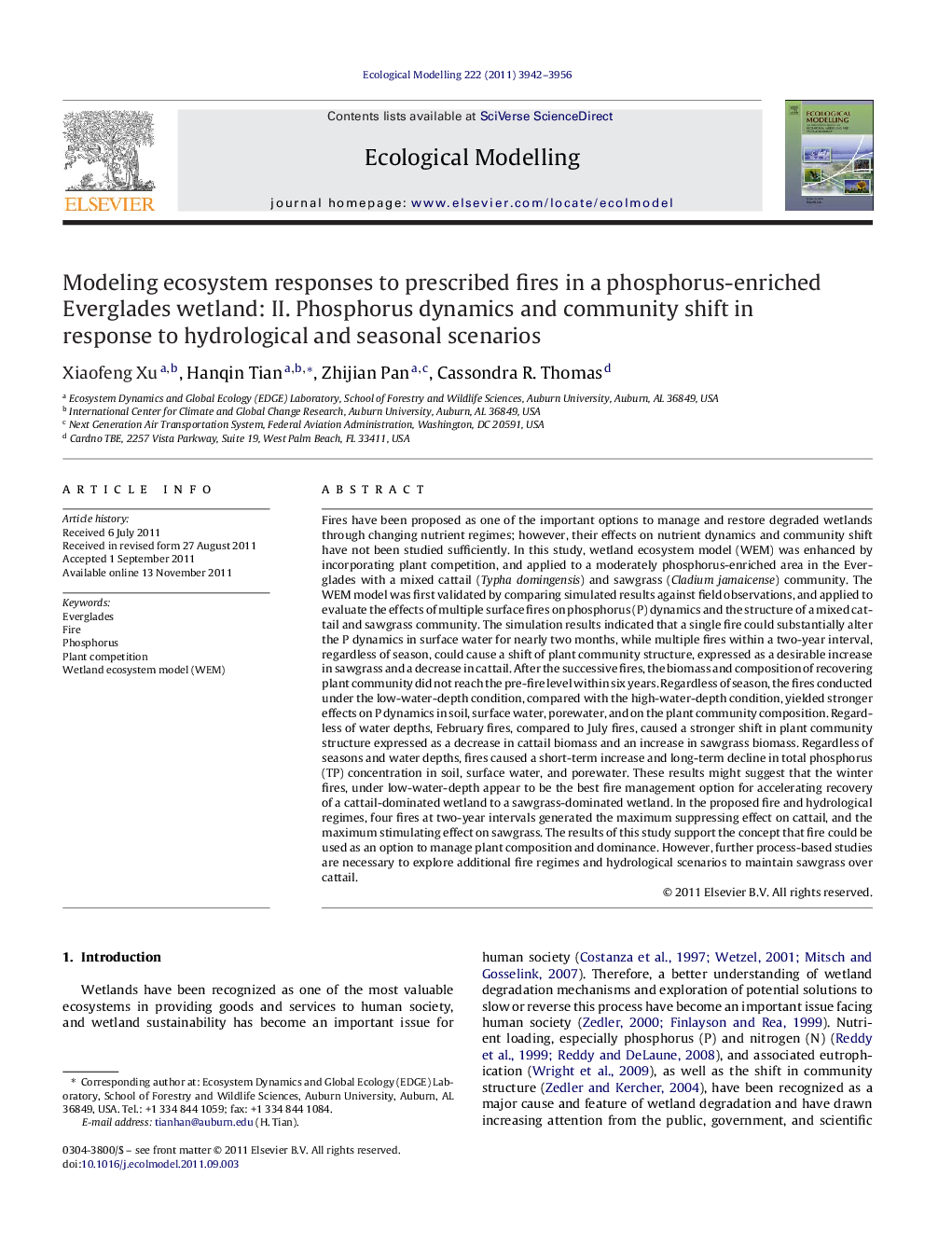| کد مقاله | کد نشریه | سال انتشار | مقاله انگلیسی | نسخه تمام متن |
|---|---|---|---|---|
| 4376742 | 1617519 | 2011 | 15 صفحه PDF | دانلود رایگان |

Fires have been proposed as one of the important options to manage and restore degraded wetlands through changing nutrient regimes; however, their effects on nutrient dynamics and community shift have not been studied sufficiently. In this study, wetland ecosystem model (WEM) was enhanced by incorporating plant competition, and applied to a moderately phosphorus-enriched area in the Everglades with a mixed cattail (Typha domingensis) and sawgrass (Cladium jamaicense) community. The WEM model was first validated by comparing simulated results against field observations, and applied to evaluate the effects of multiple surface fires on phosphorus (P) dynamics and the structure of a mixed cattail and sawgrass community. The simulation results indicated that a single fire could substantially alter the P dynamics in surface water for nearly two months, while multiple fires within a two-year interval, regardless of season, could cause a shift of plant community structure, expressed as a desirable increase in sawgrass and a decrease in cattail. After the successive fires, the biomass and composition of recovering plant community did not reach the pre-fire level within six years. Regardless of season, the fires conducted under the low-water-depth condition, compared with the high-water-depth condition, yielded stronger effects on P dynamics in soil, surface water, porewater, and on the plant community composition. Regardless of water depths, February fires, compared to July fires, caused a stronger shift in plant community structure expressed as a decrease in cattail biomass and an increase in sawgrass biomass. Regardless of seasons and water depths, fires caused a short-term increase and long-term decline in total phosphorus (TP) concentration in soil, surface water, and porewater. These results might suggest that the winter fires, under low-water-depth appear to be the best fire management option for accelerating recovery of a cattail-dominated wetland to a sawgrass-dominated wetland. In the proposed fire and hydrological regimes, four fires at two-year intervals generated the maximum suppressing effect on cattail, and the maximum stimulating effect on sawgrass. The results of this study support the concept that fire could be used as an option to manage plant composition and dominance. However, further process-based studies are necessary to explore additional fire regimes and hydrological scenarios to maintain sawgrass over cattail.
► Fires could be used to manage plant composition in natural wetlands.
► Fires conducted under the low-water-depth condition are more influential.
► February fires are stronger than July fires in shifting plant community structure.
Journal: Ecological Modelling - Volume 222, Issues 23–24, 10 December 2011, Pages 3942–3956